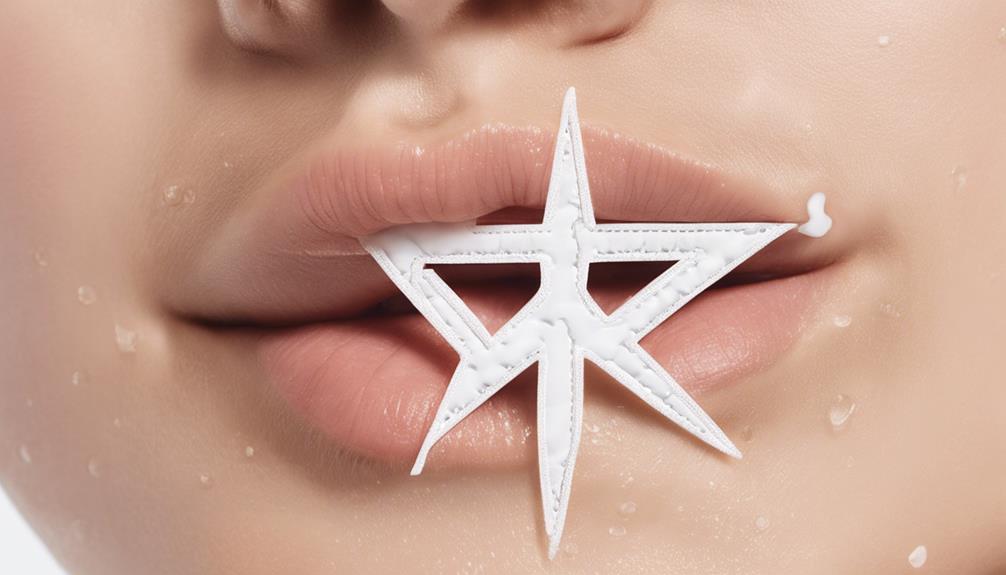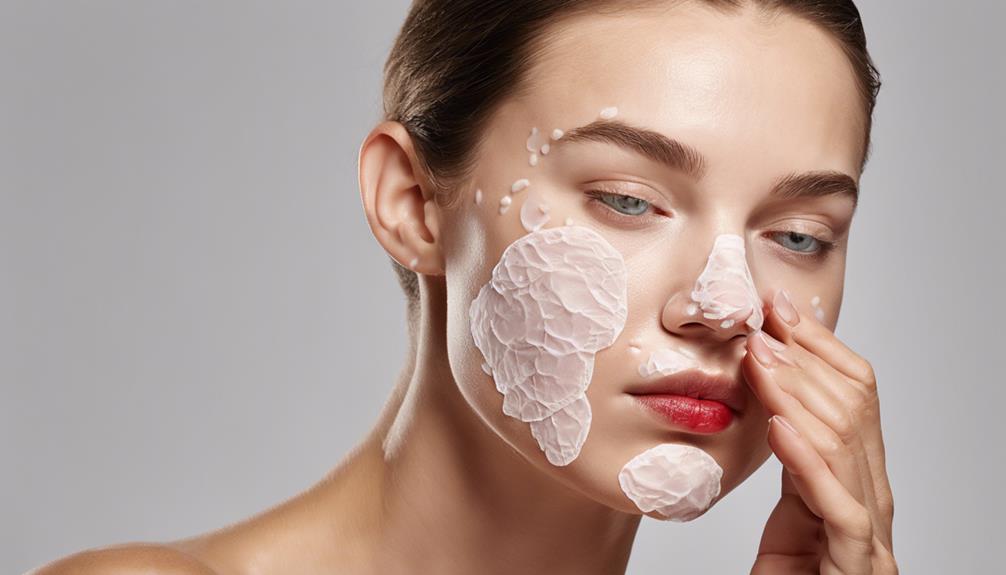You should keep pimple patches on your face for about 4 to 8 hours for the best results. However, for stubborn blemishes, you can wear them for up to 24 hours. You’ll know they’re working when they turn white or opaque, indicating they’ve absorbed enough pus and oil. Remember to check your skin regularly and verify the patch is clean and dry before applying. Want to know more about types and benefits of pimple patches?
Key Takeaways
- Pimple patches are typically recommended to be worn for 4 to 8 hours for optimal effectiveness.
- They can be worn overnight for 8 to 12 hours to reduce inflammation and absorb excess oil.
- Extended wear up to 24 hours is possible for stubborn blemishes, with regular checks for saturation.
- Patches turn white when they have absorbed enough pus and oil, indicating it’s time to remove them.
- Daily use is acceptable, making pimple patches convenient for managing breakouts.
Understanding Pimple Patch Composition and Purpose
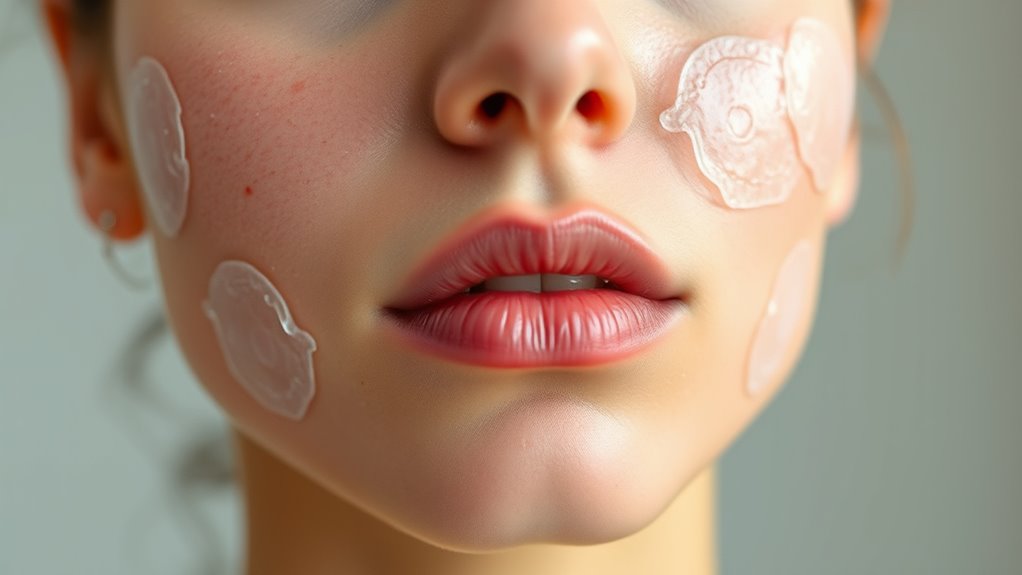
When you apply a pimple patch, you’re benefiting from a unique blend of ingredients designed to target and treat individual blemishes effectively. These patches often contain hydrocolloid dressings, which absorb excess fluid and reduce inflammation. You’ll find gel-forming agents and skin-safe adhesives that help the patch stay in place while promoting healing. Some patches even include natural oils like coconut oil for moisture and antiseptics like salicylic acid for enhanced treatment. The quality of raw materials used in these patches directly impacts their effectiveness in preventing breakouts and reducing inflammation. By using pimple patches, you can discreetly protect your skin from external bacteria and irritation, preventing picking that could lead to scarring.
Recommended Duration for Standard Use
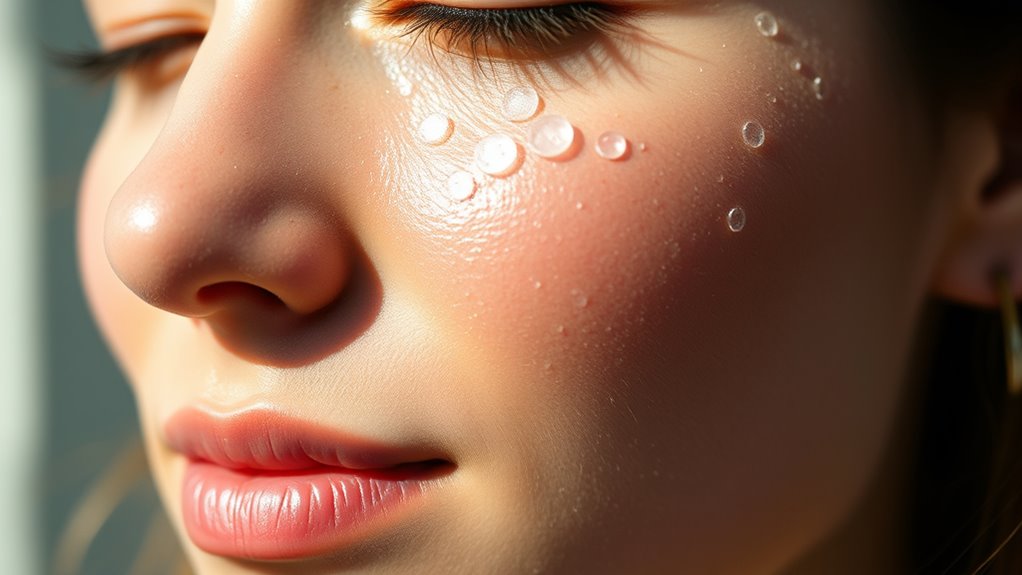
To maximize the benefits of pimple patches, it’s recommended you wear them for about 4 to 8 hours. This duration allows the patches to effectively absorb impurities and reduce inflammation, especially on whiteheads. You’ll notice the patch turning white when it has absorbed enough pus and oil, signaling it’s time for a change. Before applying, make sure your skin is clean and dry to guarantee proper adhesion. Hydrocolloid patches, the most common type, work best for standard use. If you find a stubborn blemish, you can consider extended wear for up to 24 hours, but check regularly to avoid saturation. Additionally, these patches create a moist environment that speeds up healing while preventing scabs and scars. Following these guidelines guarantees you get the most out of your pimple patches.
Benefits of Overnight Use
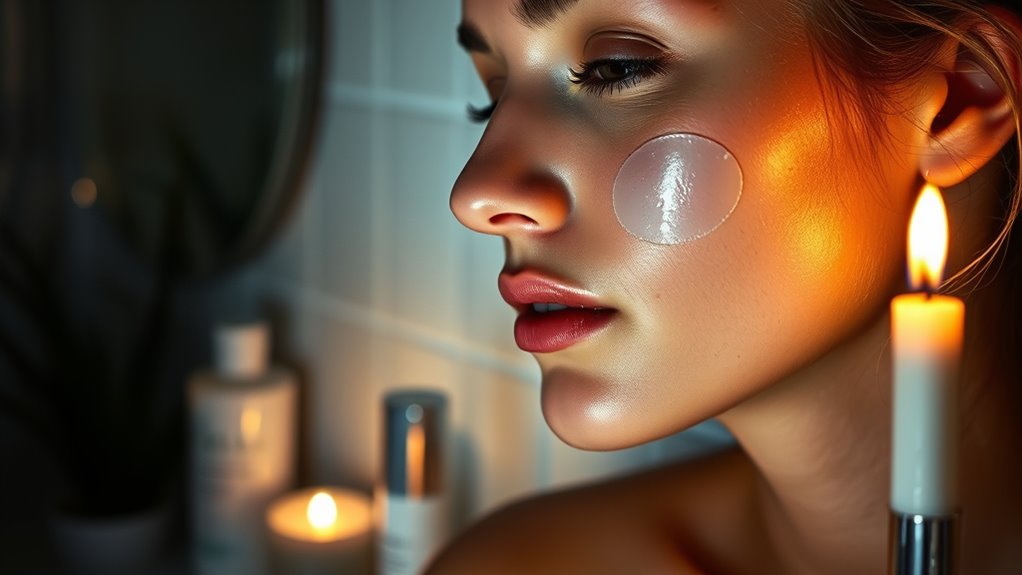
Wearing pimple patches overnight offers numerous advantages that can enhance your skincare routine. During the 8-12 hours you sleep, these patches work to reduce inflammation and absorb excess oil, effectively flattening stubborn breakouts. They act as a shield, preventing you from picking or touching your pimples, which minimizes the risk of scarring. The hydrocolloid material keeps the area moist, promoting natural healing while protecting your skin from pollutants and bacteria. When the patches turn white or opaque, they signal that they’ve absorbed impurities, indicating their effectiveness. By removing the patch in the morning and sticking to your regular skincare routine, you can maintain the benefits and enjoy clearer skin. Daily use is generally acceptable if needed, making overnight wear a convenient option for those experiencing breakouts.
Guidelines for Extended Wear
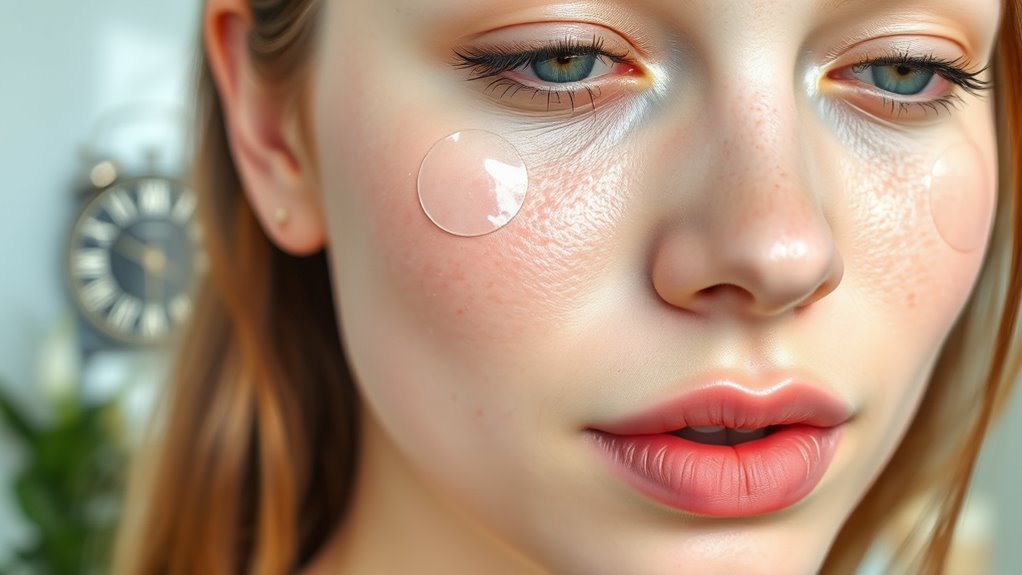
Although extended wear of pimple patches can be beneficial for stubborn blemishes, it’s crucial to follow specific guidelines to guarantee ideal results.
You can wear patches for up to 24 hours, especially for inflammatory acne. However, regularly check the patch for saturation and replace it if necessary to maintain its effectiveness. Hydrocolloid patches are designed to absorb excess fluid, which can enhance their efficacy when used properly.
Extended wear beyond recommended times may irritate your skin, so be cautious if you have sensitive skin. Look for thinner, discreet patches designed for comfort during extended use.
Remove the patch once it turns white or becomes opaque, indicating it’s absorbed pus and debris. These steps will help you maximize the benefits of pimple patches while minimizing the risk of irritation.
Exploring Different Types of Pimple Patches

When it comes to choosing the right pimple patch, understanding the various types available can make all the difference in your skincare routine.
Hydrocolloid patches absorb excess fluid and create a protective barrier, while medicated patches target bacteria and inflammation with ingredients like salicylic acid. Pimple patches are designed for one-time use, making them a convenient option for quick treatment.
If you’re dealing with deep acne, microneedle patches guarantee active ingredients penetrate deeper layers. Non-hydrocolloid patches focus on delivering targeted treatments without drawing out pus, and customized patches offer specific solutions tailored to your skin’s needs.
Whether you have oily, sensitive, or normal skin, there’s a patch type that can help.
Frequency of Use and Skin Care Considerations

Choosing the right pimple patch is just the first step; understanding how often to use them and considering your skin’s unique needs can greatly impact your results.
For ideal effectiveness, keep patches on for 6 to 12 hours, or up to 24 hours for larger inflamed pimples. Replace them when they turn white, indicating they’ve absorbed fluids. Applying them overnight allows for maximum absorption and can enhance the healing process by creating a moist environment.
Always start with clean, dry skin and apply any topical treatments first. For sensitive skin, opt for hypoallergenic patches to avoid irritation.
Finally, moisturize after removing the patch to soothe your skin. Regularly using patches on new blemishes can help manage acne, but avoid overuse to prevent dryness.
Frequently Asked Questions
Can Pimple Patches Be Used on Open Wounds?
Yes, you can use pimple patches on open wounds, especially after popping a pimple. They absorb drainage and help protect the area, promoting healing.
Just make sure the skin is clean and dry before applying the patch, as this enhances adhesion. However, avoid using them on infected wounds to prevent complications.
Always monitor the patch; if it becomes saturated, replace it to maintain effectiveness and support your skin’s recovery.
Are Pimple Patches Effective for All Skin Types?
Yes, pimple patches are effective for all skin types, including normal, oily, combination, and dry skin.
If you’ve got sensitive skin, just check the ingredients to avoid irritation. They work best on surface-level pimples, so don’t rely on them for deep cystic acne.
You can use them daily, as long as your skin is clean and dry, making them a practical option for quick pimple reduction anytime you need it.
How Do I Know if a Patch Is Working?
To know if a pimple patch is working, look for visual signs like color change; it should turn white or opaque as it absorbs impurities.
You’ll also notice reduced redness and inflammation around your pimple.
If the size decreases and you see no new pus forming, that’s a good sign.
Pay attention to how your skin reacts after removal—no irritation means it’s compatible with your skin, indicating effectiveness!
Can I Wear Makeup Over Pimple Patches?
Yes, you can wear makeup over pimple patches! They actually create a smooth surface, making it easier to blend your makeup.
Just make sure to clean your skin before applying the patch and choose one that fully covers the blemish.
Use a thin layer of matte finish concealer to blend seamlessly. Avoid heavy products or skincare on the patch to keep it effective.
This way, you can camouflage breakouts while promoting healing!
What Should I Do if a Patch Irritates My Skin?
If a patch irritates your skin, remove it immediately to prevent further discomfort.
Gently cleanse the area with a mild cleanser, then apply a soothing moisturizer. You might find relief with a cold compress or a hydrocortisone ointment for itching.
Keep an eye on your skin for any worsening symptoms, and if irritation persists, don’t hesitate to consult a dermatologist.
Taking these steps can help calm your skin and prevent future reactions.
Conclusion
To sum up, knowing how long to keep pimple patches on can transform your skincare routine. Whether you choose to wear them overnight or for a few hours, the key is understanding their purpose. Embrace the benefits of extended wear, explore different types, and listen to your skin’s needs. With the right approach, you’ll not only reduce blemishes but also boost your confidence. So, stick to the guidelines, stay consistent, and watch your skin thrive.



